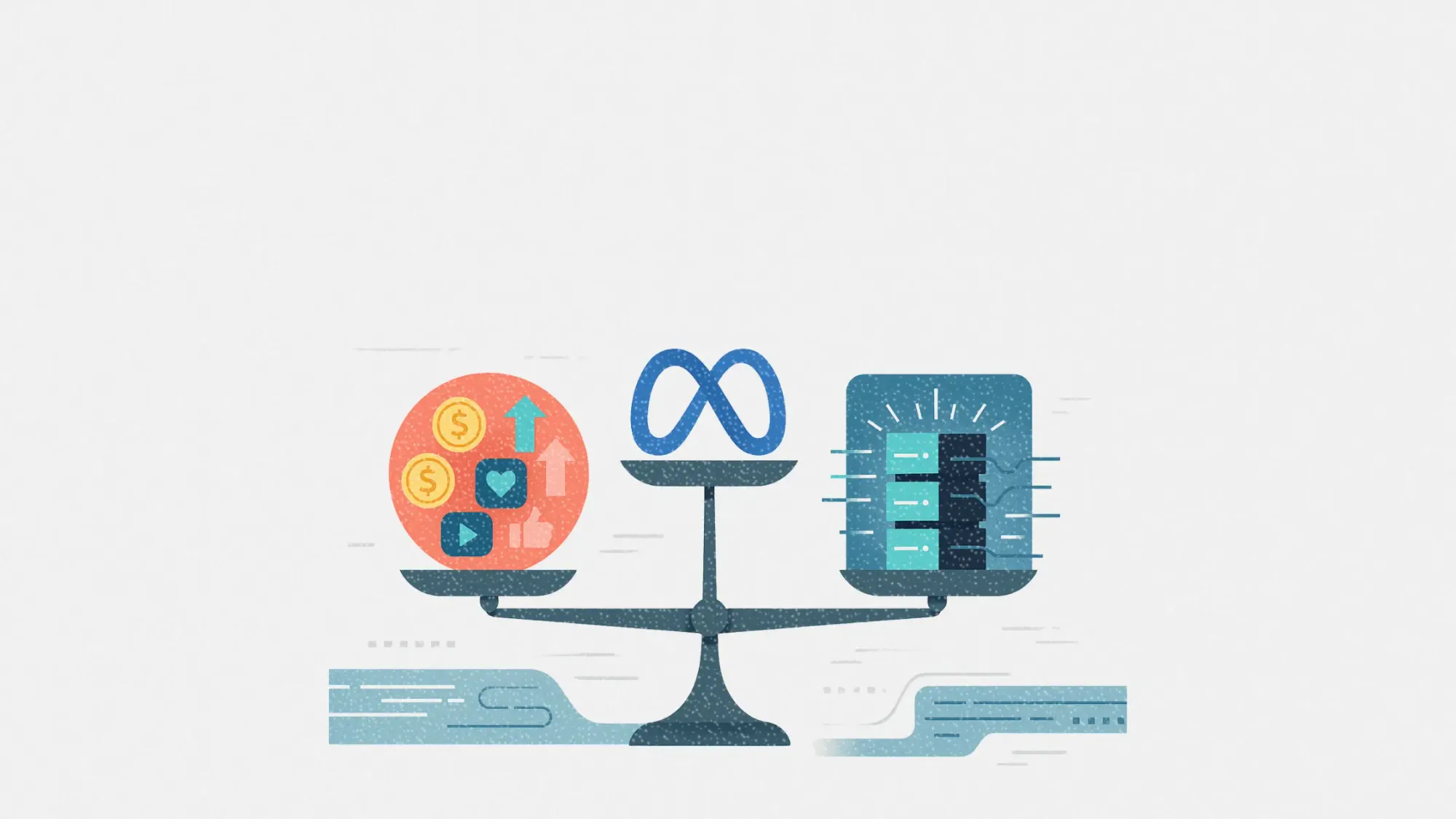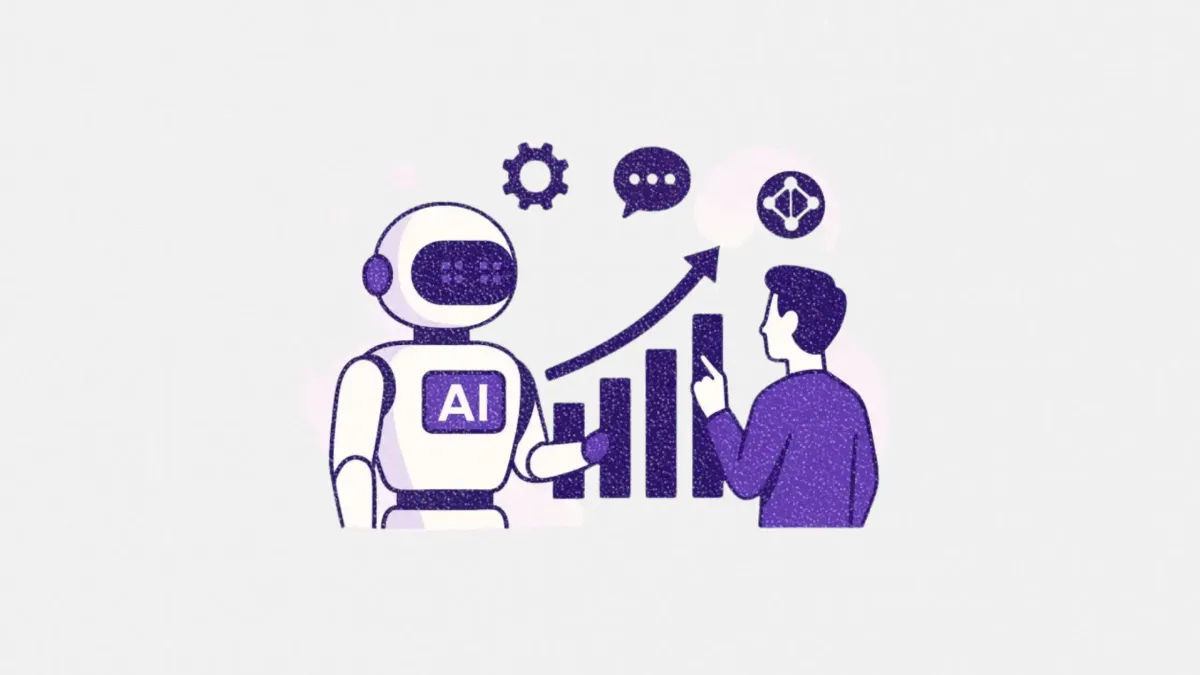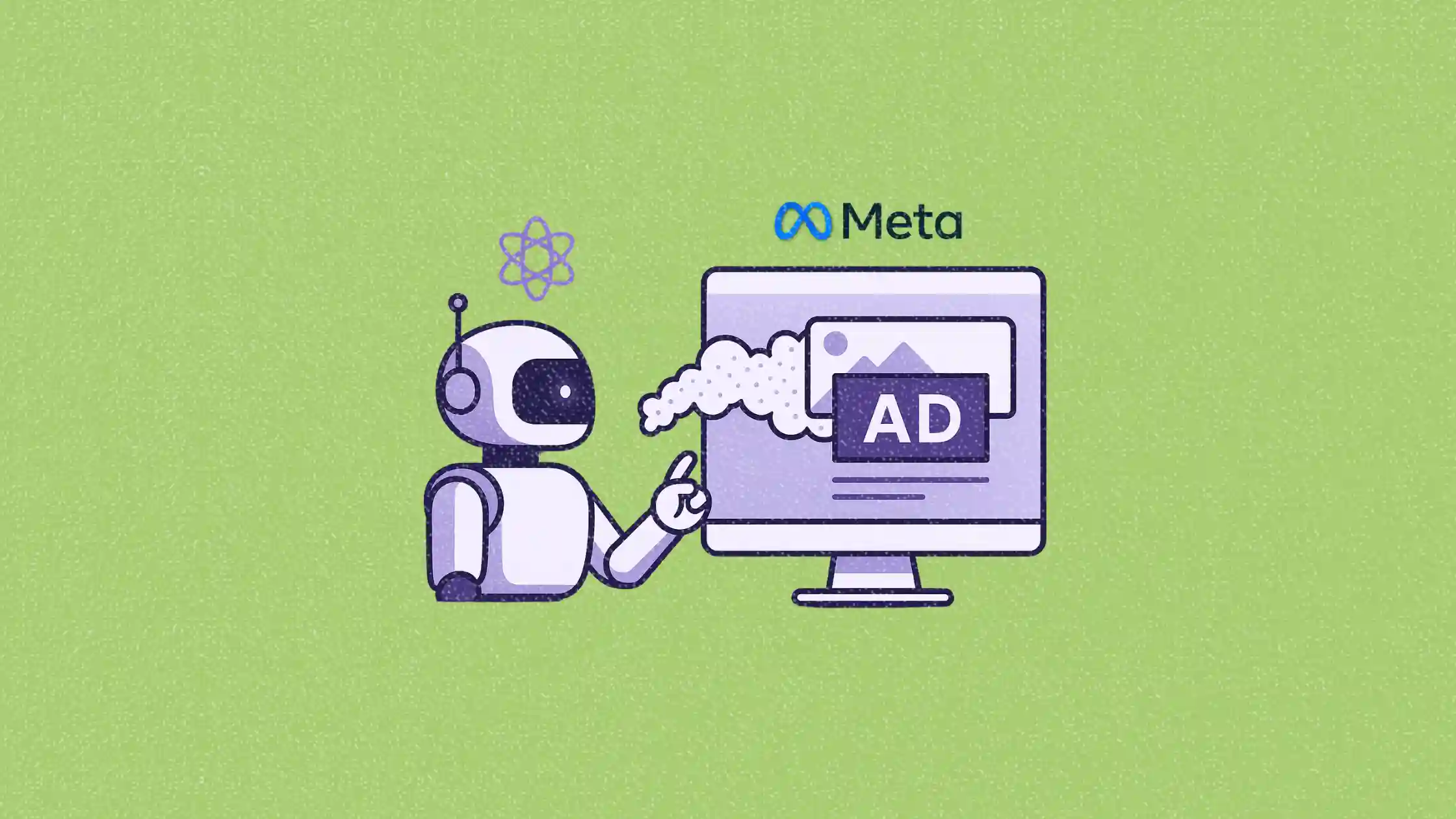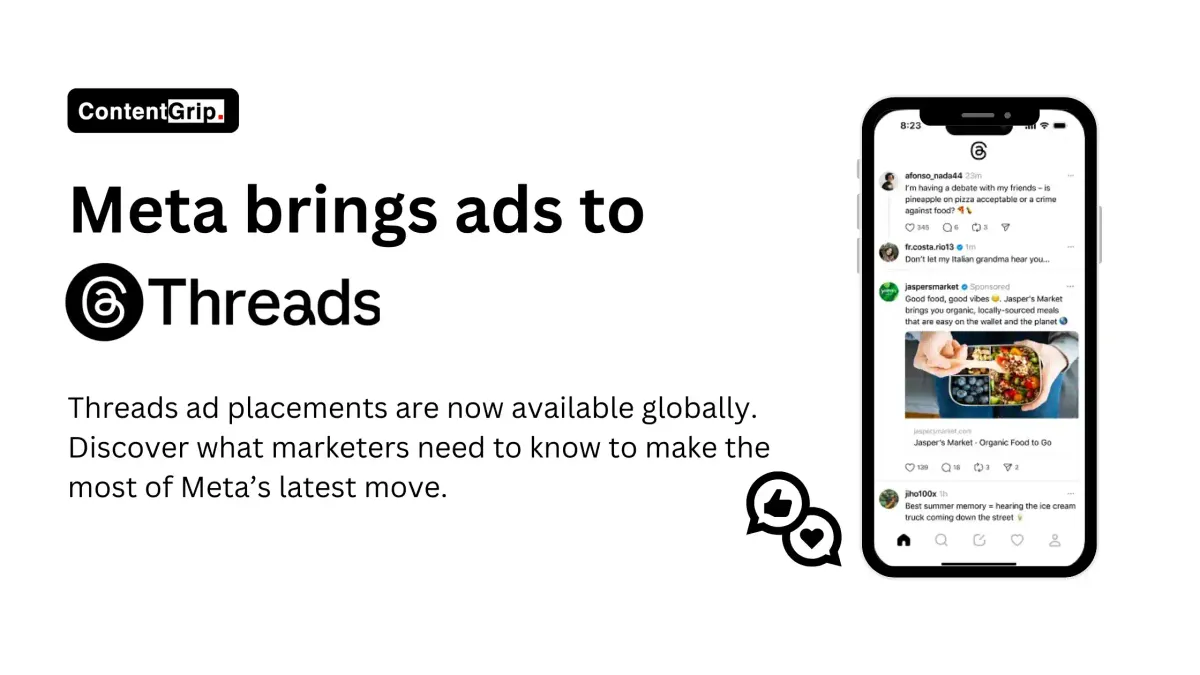Meta’s Q3 stumble: AI bets rise, earnings fall
Meta's ad engine is booming, but rising AI costs triggered a stock dip. Here’s how marketers should interpret the shake-up

Meta’s latest earnings call came with a double-edged message: while ad revenue is up, its rising AI infrastructure costs triggered a stock slide and investor anxiety.
Behind the numbers, though, lies a broader story marketers should track. The platform’s strategic pivot into AI could reshape everything from media buying to audience targeting.
This article explores the key takeaways from Meta’s Q3 earnings, and why marketers should keep a close eye on the shifting cost structure behind their favorite ad platforms.
Short on time?
Here’s a table of contents for quick access:
- Meta's ad business is still strong
- AI infrastructure is now the biggest cost driver
- What marketers should know about Meta’s pivot

Meta's ad business is still strong
Despite the stock dip, Meta's ad engine is running hot. The company brought in US$50.1 billion in ad revenue, a 26% year-over-year increase. Overall revenue hit US$51.24 billion, lifted by a 14% increase in ad impressions and a 10% rise in average ad prices.
Instagram surpassed 3 billion monthly active users, and Meta's end-to-end automated ad solutions are now driving US$60 billion in annual run-rate revenue. CEO Mark Zuckerberg reported a 5% increase in time spent on Facebook and a 10% rise on Threads, both fueled by stronger AI-driven content recommendations.
Reels is another standout, now pulling in over US$50 billion in annualized revenue, highlighting that Meta’s investment in short-form video continues to gain traction.

AI infrastructure is now the biggest cost driver
But Meta’s earnings also revealed financial turbulence behind the scenes.
The biggest hit came from a US$15.9 billion one-time tax charge, triggered by a deferred tax asset adjustment following Trump’s “One Big Beautiful Bill” legislation. That charge pulled earnings per share down to US$1.05, far below the average analyst estimate of US$6.72.
Beyond taxes, the more lasting concern is Meta’s ballooning AI infrastructure spend. The company has been on a hiring spree, growing its workforce to 78,400 employees, up 8% year-over-year, with many new hires focused on AI and compute. Meta’s capital expenditures are climbing fast as it builds new data centers and scales cloud compute capacity to support growing AI demands.
CFO Susan Li warned that expenses will rise even faster in 2026, driven by infrastructure and third-party cloud costs. These expenses are being partially offset by ad revenue, but not without pressure on margins.
Zuckerberg pushed back against concerns of overbuilding. “Almost every week, people come to us asking to stand up an API service or provide compute,” he said. “If we ended up overbuilding, that could be an option. The very worst case would be that we’ve prebuilt for a couple of years. We’d grow into that capacity over time.”

What marketers should know about Meta's pivot
For B2B marketers, media planners, and growth teams, Meta’s AI ambitions are not just back-end infrastructure news. They directly impact how campaigns run and what’s coming next in digital ad strategy.
1. Expect more automation in ad delivery
Meta is doubling down on automated systems like Advantage+ to drive ad performance. These tools are already powering billions in revenue and will likely become more central. Marketers who still rely on manual campaign tweaking should rethink their approach.
2. Rising costs could shift ad pricing
If infrastructure costs continue to outpace revenue growth, Meta may look to monetize through pricing. That could impact CPMs, CPCs, or even introduce premium tiers for advertisers. Budget accordingly.
3. Infrastructure now matters to marketers
Performance marketing depends on reliability and scale. Meta’s comments signal a shift toward treating compute as a strategic differentiator. For marketers, this means keeping tabs on platform investment trends is no longer optional.
4. AI monetization could go beyond ads
Zuckerberg hinted at turning Meta’s AI infrastructure into external services. This could eventually give marketers access to Meta-grade AI tools for content generation, optimization, or personalization. Stay ready to experiment.
Meta’s Q3 earnings showed a tale of two realities. Its ad business is thriving, but rising infrastructure costs are reshaping how the company grows and what it prioritizes.
For marketers, the takeaway is clear. AI is not just powering ad targeting. It is becoming the foundation of how Meta operates. Staying ahead means understanding where the money is going, how that affects product development, and what new tools or costs may emerge.
Adaptability is the strategy that will matter most.






